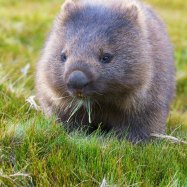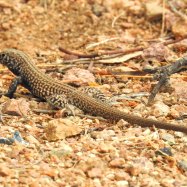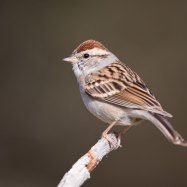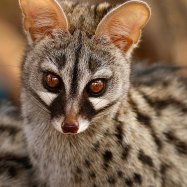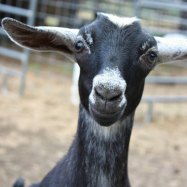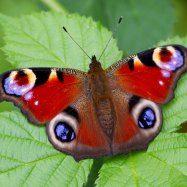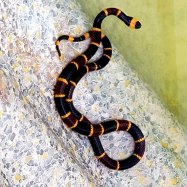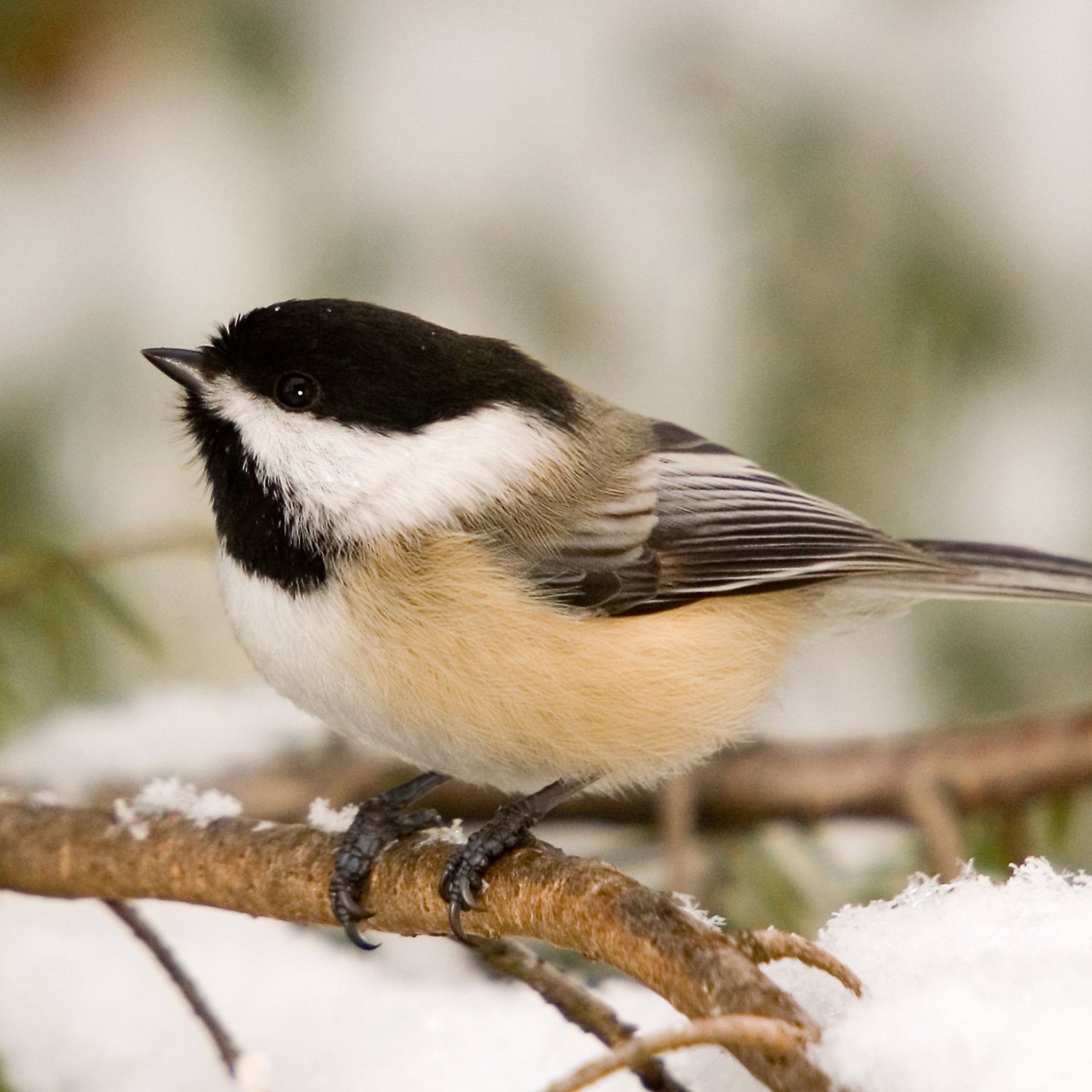
Chickadee
11-14 cm
Meet the adorable Chickadee - a small bird with a big personality! Found across North America, these cute creatures belong to the Paridae family and have a small, round body, short neck, and long tail. Keep an eye out for their sweet songs and playful antics, as they are sure to make you smile. #Chickadee #Birdwatching #Paridae #naturelovers
Animal Details Summary:
Common Name: Black-capped Chickadee
Kingdom: Animalia
Habitat: Deciduous and mixed forests
The Cheerful Songbird of North America: The Black-Capped Chickadee
In the vast and diverse world of birds, there is a special species that stands out for its endearing personality, cheerful demeanor, and impressive adaptability. This bird, known as the Black-capped Chickadee, has captured the hearts of birders and non-birders alike with its adorable appearance, animated vocalizations, and playful nature. Let's take a closer look at this feathered friend and discover what makes it an exceptional member of the animal kingdom.Scientifically named Poecile atricapillus, the Black-capped Chickadee belongs to the Kingdom Animalia, Phylum Chordata, Class Aves, and Order Passeriformes Chickadee. It is part of the Paridae family, which includes other small songbirds like tits and titmice. These fascinating birds are native to North America, found primarily in the United States and Canada, with a range that spans across the continent.
One of the most striking features of the Black-capped Chickadee is its coloration. As the common name suggests, its head is adorned with a black cap, while its cheeks sport a snowy white hue. The rest of its body is a mix of grays and blacks, with a white belly. The distinct color pattern of the Black-capped Chickadee makes it easily recognizable even from a distance.
These charming birds have an average length of 11-14 cm, with a small, round body, a short neck, and a long tail. Despite their diminutive size, they are known for their impressive adaptability and resilience. Black-capped Chickadees can survive in a variety of habitats, from deciduous and mixed forests to urban areas and backyards Cinereous Vulture. They are also able to withstand harsh winter conditions, thanks to their ability to lower their body temperature and enter a state of torpor.
One of the most endearing qualities of the Black-capped Chickadee is its cheerful personality. These birds are known for their bubbly, lively vocalizations that can be heard throughout the day. They have a distinct call that sounds like "chick-a-dee-dee-dee," which gave them their common name. These vocalizations serve different purposes, from alerting others of potential danger to establishing territories and forming social bonds.
Black-capped Chickadees are also highly social creatures and form strong pair bonds with their mates. They are known to exhibit altruistic behaviors, especially during the breeding season. Male chickadees have been observed helping their mates gather food and even incubate eggs, showcasing their strong commitment to their families.
Feasting on a diverse diet, Black-capped Chickadees are considered omnivores. They primarily feed on insects, spiders, and other arthropods, but also consume seeds, nuts, and berries when available. These resourceful birds are known to store food for the winter, often tucking away seeds and nuts in the bark of trees or crevices in the ground. This behavior, known as caching, helps them survive during the colder months when their food sources may be scarce.
Black-capped Chickadees are also fascinating creatures when it comes to their cognitive abilities. These birds have been observed exhibiting problem-solving skills, such as using tools to access food sources. They have also been recorded successfully navigating complex mazes and differentiating between different types of food.
Not only are Black-capped Chickadees fascinating to observe and interact with, but they also play a vital role in their ecosystem. As insectivores, they help control insect populations, while also serving as a food source for larger predators like hawks and owls. Their foraging habits also aid in seed dispersal, helping to regenerate plant species in their habitat.
In addition to their important ecological role, Black-capped Chickadees also hold a special place in human culture. These birds have been featured in various folklore and children's literature, often symbolizing happiness, friendliness, and joy. They have also been the subject of a famous and beloved Christmas song, "The Chickadee Song," by John Denver.
Black-capped Chickadees are a popular species among birders, with many avidly seeking out these charismatic birds in the wild. Their adaptability and tolerance for human presence make them a common sight in backyards and parks, where they can be easily observed and appreciated.
In recent years, the Black-capped Chickadee population has faced some threats, including habitat loss, climate change, and disease. However, thanks to conservation efforts, their numbers have remained stable, and these resilient birds continue to thrive across North America.
In conclusion, the Black-capped Chickadee is a truly remarkable bird, with its adorable appearance, cheerful personality, and important ecological role. As we continue to study and learn more about these fascinating creatures, we can appreciate their unique qualities and the valuable contributions they make to our natural world. So, the next time you hear the familiar "chick-a-dee-dee-dee" call, take a moment to appreciate the beauty and wonder of the Black-capped Chickadee.

Chickadee
Animal Details Chickadee - Scientific Name: Poecile atricapillus
- Category: Animals C
- Scientific Name: Poecile atricapillus
- Common Name: Black-capped Chickadee
- Kingdom: Animalia
- Phylum: Chordata
- Class: Aves
- Order: Passeriformes
- Family: Paridae
- Habitat: Deciduous and mixed forests
- Feeding Method: Omnivorous
- Geographical Distribution: North America
- Country of Origin: Canada and United States
- Location: Across North America
- Animal Coloration: Black cap, white cheeks, and a gray-black back; white belly
- Body Shape: Small, round body with a short neck and a long tail
- Length: 11-14 cm
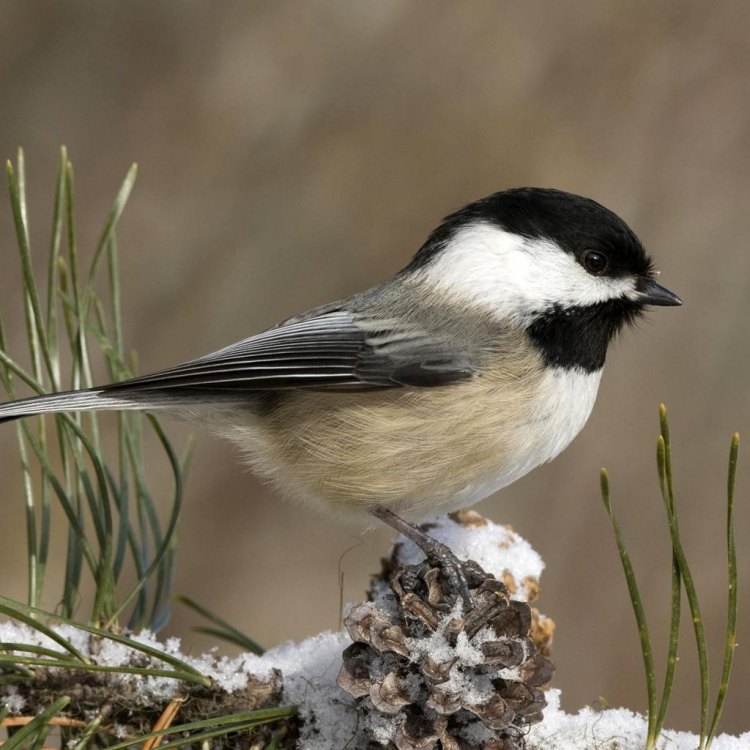
Black-capped Chickadee
- Adult Size: 10-14 grams
- Average Lifespan: 1.5-10 years
- Reproduction: Sexual
- Reproductive Behavior: Monogamous
- Sound or Call: Chick-a-dee-dee-dee call
- Migration Pattern: Some populations migrate, while others remain resident
- Social Groups: Small groups
- Behavior: Active and acrobatic
- Threats: Loss of habitat, severe weather conditions, predation
- Conservation Status: Least Concern
- Impact on Ecosystem: Seed dispersal, insect control
- Human Use: Birdwatching, seed feeders
- Distinctive Features: Black cap and bib, white cheeks
- Interesting Facts: Chickadees can remember thousands of hiding places where they store food for later use. They also have the ability to lower their body temperature during cold nights to conserve energy.
- Predator: Hawks, owls, snakes, and domestic cats
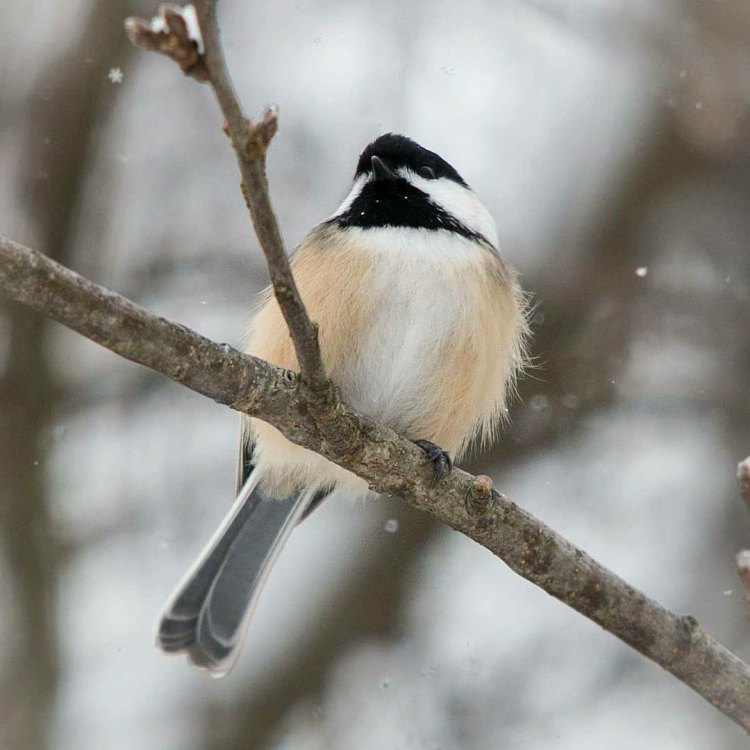
Poecile atricapillus
Discovering the Fascinating World of Chickadees: A Tiny Bird with a Big Personality
The world of birds is filled with a diverse range of species, each with their own unique characteristics and behaviors. Among them, the Chickadee stands out as a true symbol of resilience and adaptability. Despite its small size, this tiny bird has managed to capture the hearts of bird enthusiasts and nature lovers alike with its playful personality and distinctive features.Let's take a closer look at the fascinating world of chickadees and uncover the many secrets and wonders of this small but mighty creature PeaceOfAnimals.Com.
The Physical Characteristics
The Chickadee, also known as the Carolina Chickadee, is a small passerine bird that belongs to the Paridae family. This North American bird measures between 4.7 to 5.9 inches in length and weighs a mere 10-14 grams, making it one of the smallest birds in its habitat.One of the most distinctive features of the Chickadee is its black cap and bib, which contrast beautifully with its white cheeks and creamy-white underbelly. Its wings and back are gray, and it has a short black bill and dark eyes.
Adaptable and Resilient
Chickadees are remarkable creatures that have managed to thrive in various environments, including deciduous and coniferous forests, suburban areas, and even city parks. Their adaptability and resilience have allowed them to expand their range to almost the entire North American continent, from Canada down to Mexico.In addition to their ability to adapt to different environments, chickadees are also known for their ability to adapt to harsh weather conditions Clouded Leopard. These tiny birds have a thick, fluffy plumage that keeps them warm during cold winter nights. They also have the ability to lower their body temperature to conserve energy, a behavior known as "torpor." This impressive adaptation allows them to survive even the harshest of winters.
The Reproductive Behavior
Chickadees are monogamous birds, meaning they mate with only one partner for life. Each breeding season, the male Chickadee will court the female with intricate songs and elaborate displays. Once they have chosen a nesting site, the female will begin constructing a nest, usually in a tree cavity or a birdhouse.The breeding season for Chickadees usually begins in late March and continues through July, with a peak in April and May. During this time, the male and female will engage in a lively duet, where they call and answer each other in their signature "chick-a-dee-dee-dee" call. This call, along with other vocalizations, serves as a form of communication within their small social groups.
The Social Life of Chickadees
Chickadees are social birds that often form small flocks of 6 to 8 individuals, with a dominant male and female at the helm. These groups stay together throughout the year, foraging and roosting together. However, during the breeding season, mating pairs will separate from the flock and form their own small territories.Despite their small size, Chickadee groups have a complex social hierarchy, with dominant individuals being more likely to survive and reproduce. However, these groups are not without their conflicts, and disputes over food and territory are not uncommon.
Active and Acrobatic Natures
Chickadees are known for their active and acrobatic behaviors, constantly flitting from one tree branch to another in search of insects and seeds. They have a particular love for sunflower seeds, and it is not uncommon to see them perched on seed feeders in backyards and parks.One of the most impressive feats of Chickadees is their ability to cling to the underside of branches and twigs, using their strong claws and agile movements. This behavior is essential for their survival as they search for insects and seeds hidden in tight crevices and under the bark of trees.
Threats and Conservation Status
Like most wildlife, Chickadees face various threats in their natural habitat. Loss of habitat due to deforestation, urbanization, and agriculture is a significant concern for these birds. Severe weather conditions, such as extreme heat and cold, also pose a threat to their survival.Predation is another significant threat to Chickadees, with hawks, owls, snakes, and even domestic cats preying on them. To protect themselves, Chickadees have developed a behavior known as "mobbing." This behavior involves gathering together and loudly vocalizing to drive away potential predators.
Despite these challenges, the Chickadee population remains stable, and they are classified as least concern on the IUCN Red List of Threatened Species. However, it is still crucial to continue monitoring and conserving their habitats to ensure their survival in the long run.
Impact on the Ecosystem
Chickadees play a vital role in the balance of their ecosystem. As insectivores, they help keep insect populations in check, preventing them from becoming pests. They also provide a valuable service by dispersing seeds, aiding in the growth and regeneration of forests. These birds are also an essential food source for larger predators, contributing to the overall health of the ecosystem.The Human Connection
Chickadees hold a special place in the hearts of many bird enthusiasts and nature lovers. Their playful personalities, stunning appearance, and lively vocalizations make them a delight to watch and listen to.Birdwatching is a popular activity among people of all ages, and Chickadees are often at the top of the list of birds to spot. Their presence in backyards and parks also provides an opportunity for people to connect with nature and appreciate the beauty of these small but mighty birds.
Fun Facts about Chickadees
• Chickadees can remember thousands of hiding places where they store food for later use. This impressive memory is vital for their survival during harsh winter months when food is scarce.• These birds can even navigate through complex mazes to find hidden food sources, demonstrating their intelligence and problem-solving skills.
• Chickadees have been known to recognize individual humans and will even eat out of their hands.
• They also have a unique "deezee" alarm call that they use to warn other members of their flock of danger.
• The legend of the Chickadee is deeply rooted in Native American folklore, with many tribes considering it a sacred and powerful animal spirit.
Conclusion:
The Chickadee may be small in size, but it holds a significant place in the natural world. Its ability to adapt, its captivating behaviors, and its important role in maintaining the balance of its ecosystem make it a truly fascinating creature to discover. So, the next time you hear a "chick-a-dee-dee-dee" call, take a moment to appreciate the remarkable bird behind it and the wonders of the natural world it represents.
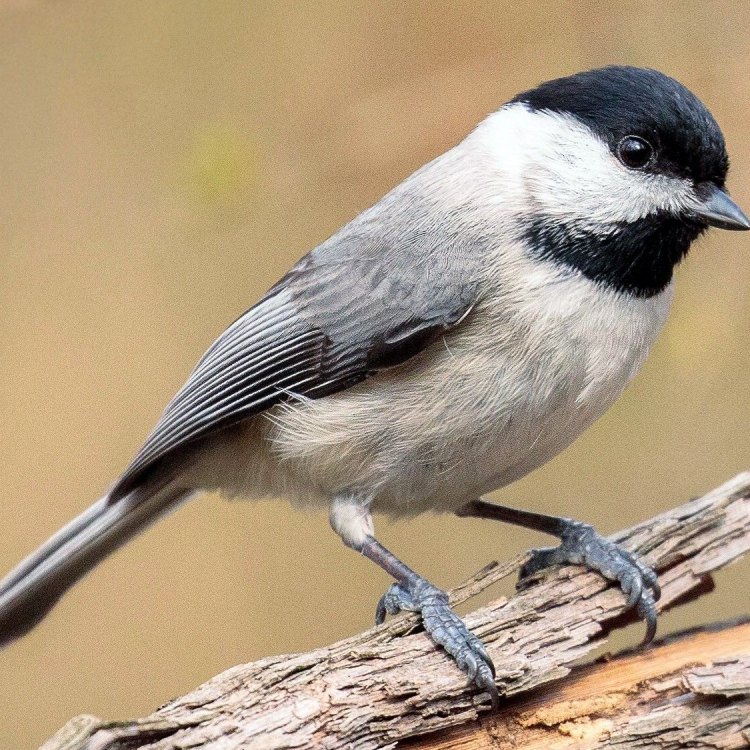
The Cheerful Songbird of North America: The Black-Capped Chickadee
Disclaimer: The content provided is for informational purposes only. We cannot guarantee the accuracy of the information on this page 100%. All information provided here may change without prior notice.

